Rye, rye flour, its moisture content, kneadingauthor Elena Zheleznyak, source
🔗RYE The other day I got organic rye of an unusually green hue, I was surprised, because before that I had only encountered dark brown rye. I suspected that she might not have matured yet, but after looking at what rye can be, I calmed down: it can be yellow, and brown, and even with a purple tint, and a shape like wheat - short and pot-bellied, and long, like oats, and, of course, like my current rye. And I came across a grain of a uniform beige-green color, mostly whole, without damage or flaws, rather hard, not raw, which means it is quite normal.
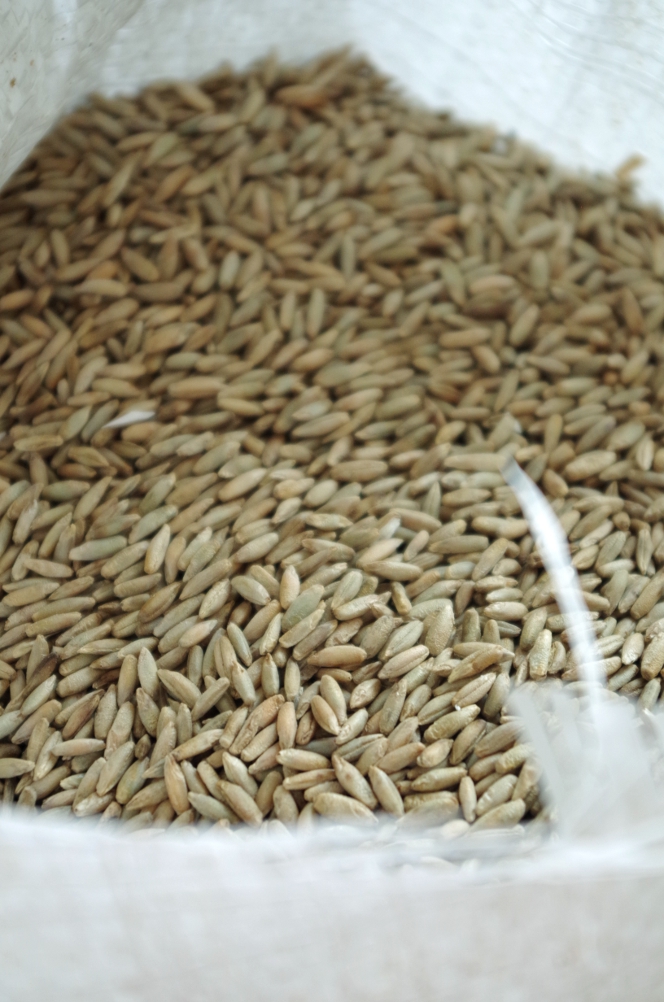
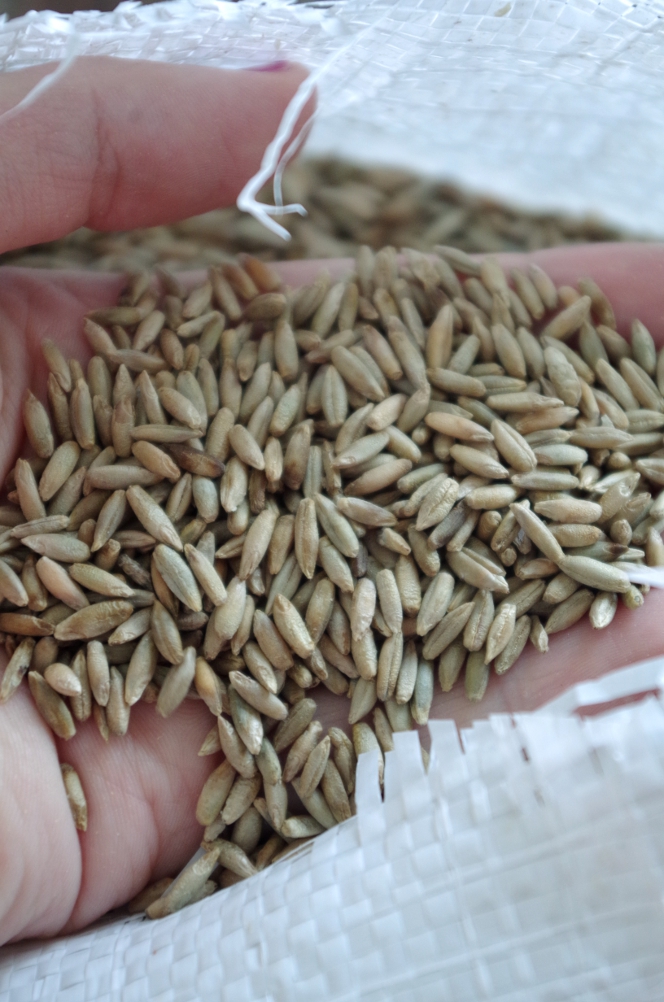
In the States and Canada, there is a huge variety of rye varieties, the grain differs from each other in length and shape, color and composition, while in our country everything is much more trivial with the rye variety - winter, sowing, wild, but the latter is practically not used in baking. Rye flour is much easier and more predictable to work with than wheat flour, its properties remain practically unchanged, regardless of the grade and batch, the main thing is to take initially high-quality grain. In short, it should not be damaged by parasites or fungi, should not be soggy and should not be germinated. Some fungi that infect grain contain poisons, and if you grind flour from the affected grain, it will be poisonous and so will bread.
Here, for example, is a rye ear infected with an ergot parasitic fungus. If its concentration in flour reaches 1%, it will turn into poison, and people who have eaten a piece of such bread will have severe intoxication: vomiting, dizziness and even loss of consciousness.
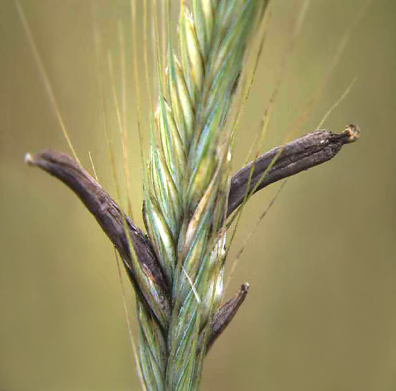
Raw grain is very difficult to grind, especially if it is grinded with stone millstones: the grains will be smeared with millstones, clog them up and can disable the mill. But even if you grind flour from sprouted rye, you can't bake good bread, it will turn out sticky and moist (but you can make malt from sprouted rye - but that's another story).
With wheat flour, everything is more complicated, because many factors influence its properties, and this, first of all, the protein content. And in general, wheat flour can differ greatly depending on the batch, even in a store flour with the same indicators of protein-carbohydrates, but different manufacturers, in fact, has a big difference. Rye flour from batch to batch is approximately the same in its properties, especially when it comes to whole grain, which practically does not need to be cured after grinding and the concept of "strong" or "weak" is not applicable to it.
Here I looked through Auerman's textbook and learned very interesting things about rye flour. In general, it has a lot in common with wheat, despite the fact that the properties of the rye flour dough are very different from the wheat dough. Rye flour, like wheat flour, has a high carbohydrate content - about 70%, and the protein content - about 10-11%, there is gluten, so people with allergies to it cannot. Moreover, rye and wheat proteins have a similar amino acid composition, and rye protein, like wheat protein, contains glutein and gliadin, the very substances that make wheat protein elastic and elastic at the same time. Nevertheless, the rye flour dough cannot be called elastic and resilient in any way, it is very sticky and slippery, it is useless to knead it, trying to achieve smoothness, gluten in the usual sense will never develop in it.

The reason for this is mucus (pentosans), which are present in large quantities in rye flour. In wheat they are also present, moreover, in about the same amount as in rye, but wheat pentosans dissolve little in water, while rye are mostly soluble. While the rye flour is mixed with water, the same mucus begins to swell and envelop the bek particles, preventing it from forming threads. By themselves, the mucus of rye flour is very water-absorbing and is capable of absorbing moisture almost ten times its own weight. In addition, they are very viscous, so much so that they surpass even gelatin in viscosity. If you compare a solution of gelatin and a solution of rye pentosans of the same concentration, the pentosan solution will be more viscous. At this point, I would like to clarify about the ripening mucus of rye flour after grinding.
It is believed that rye flour (I mean whole grain) does not need to be cured and can be used immediately, and bread baked from such flour will be incredibly tasty, an order of magnitude tastier than from the flour that has lain down. At the same time, rye flour after a couple of days of resting changes its properties and becomes more moisture-absorbing just because of the effect of oxygen on pentosans. During ripening, they increase their viscosity, rye flour retains moisture better, dough, especially hearth products, less spreading and cracking during baking.Here, for example, rye sourdough in the process of stirring: it is clear that rye dough is in no hurry to dissolve in water, despite the large amount of liquid.

It is difficult to achieve homogeneity, even with an effort, the leaven creeps into large pieces, then small pieces, which keep their shape for a long time.

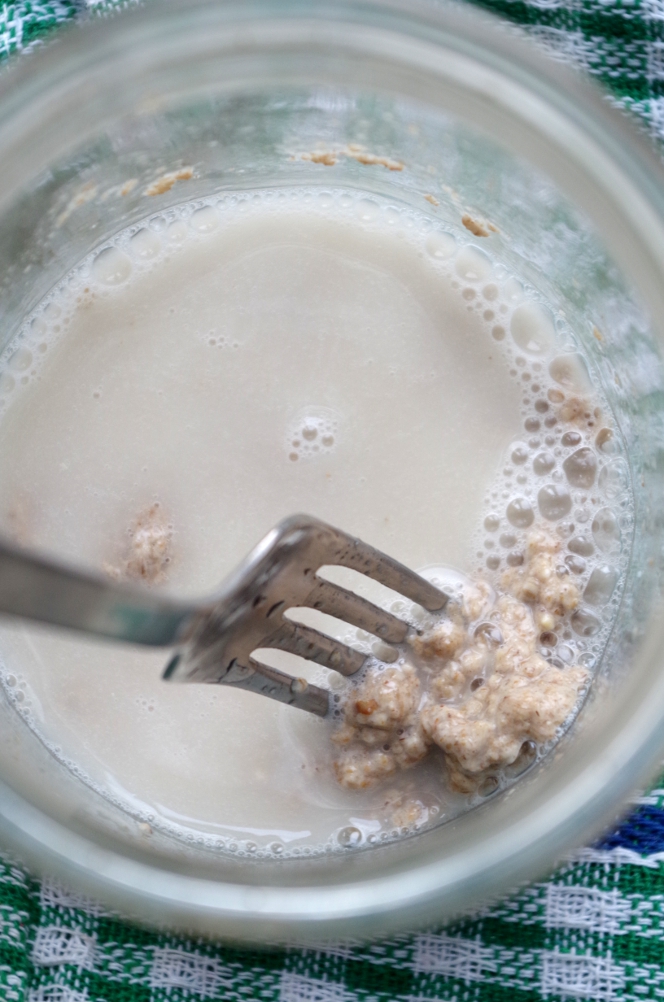
But for comparison, corn dough. It barely comes into contact with water and begins to disintegrate into grains of flour, it is not held back by either protein or mucus. The photo on the left is dry corn flour in water, on the photo on the left is corn dough. It can be seen that it just by itself, only after hitting water, begins to disperse in the liquid.
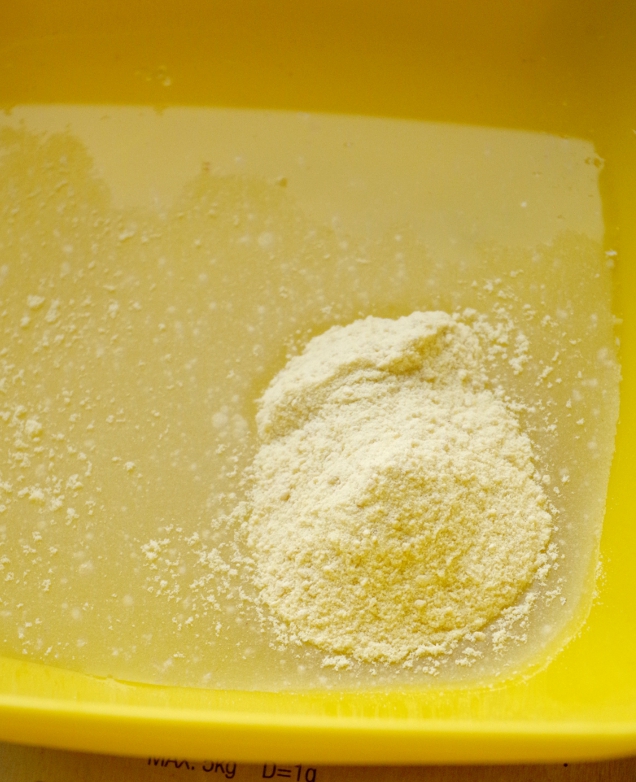
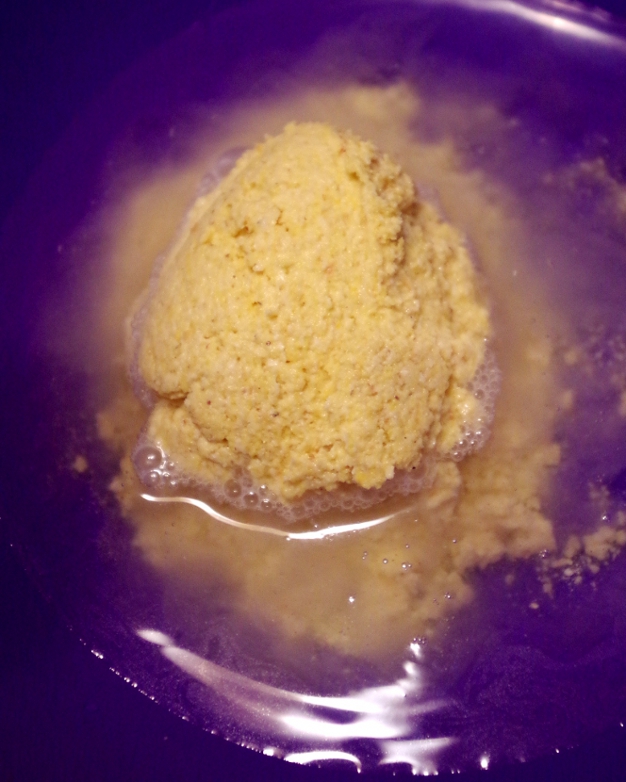
The moisture content of rye flour is a merit not only of mucus, but also of protein. It is generally accepted that in rye flour, protein has no practical value, because it cannot form a "skeleton" of the dough, as it happens with wheat flour. Scientists even tried to wash the rye gluten as an experiment, but they failed. At the same time, it is also impossible to say that rye protein does not in any way affect the properties of the dough: it is capable of absorbing a large amount of water, swelling strongly and creating a viscous solution from particles of undissolved protein, mucus, starch and bran particles of grain, in fact, thereby forming Rye dough "frame". True, this happens on condition that the dough has reached a certain acidity, which is why rye bread is baked with sourdough.
As I wrote above, I got organic grain. What it was I approximately imagined: this means that, while growing, rye was not treated with chemicals and poisons, the land on which it grew, respectively, was cultivated without synthetic fertilizers, and the harvested grain was stored without the use of poisonous or, in principle, synthetic substances. In a word, the concept of "organic" for me was very generalized and meant - "no chemistry." But, after talking with adherents of organic farming, I learned a lot of interesting and sometimes even ambiguous information. In fact, the difference between organic and non-organic is bigger and wider - it is in the idea and approach. I recently had a chance to talk with Ukrainians - supporters of organic products, who grow cereals, vegetables and even cows in the fields on organic lawns, so they are sure that organic food, besides the one that differs in taste, has a different, larger and better nutritional and energy value. Simply put, organic food will fill you up faster and eat less than usual.
If you do not take into account these subtle matters, then it is quite simple to understand the difference between organic grain and ordinary grain purely logically.Rye is a cereal that easily lends itself to spoilage: poisonous horn mushrooms, all kinds of fungal rust (there are many varieties of them) and mold, due to which rye becomes poisonous, do not develop grains in the ears, or are small and lightweight, on rye spikelets ... To protect crops from damage, they are "etched" with formalin solution. One way or another, but the poison falls on the spikelets, which are then threshed by the combine, and the grains from these formalin spikelets are ground into flour by the mill. In such a scenario, whole grain flour from ordinary industrial fields no longer seems so super-healthy, rather, on the contrary.
"Organic" farmers process their crops with herbal infusions (or preparations based on these herbs), which repel insects, destroy fungi and other enemies. It is also believed that annual plowing, which is practiced in "normal" industrial fields, makes crops more vulnerable to bad weather, it depletes the land and reduces the yield. Therefore, "organic" land is fertilized exclusively with natural fertilizers, practically do not plow (or plow, but not so deeply), and the ears left after harvest are left on the field to winter - under cover of snow they will rot and enrich the land. To keep the harvested crop from pests without the use of chemicals, it is regularly poured from bag to bag and the bags are lined with aromatic herbs. In general, these are the methods that our grandmothers used, including mine: in the barn where grain and hay were stored, she laid out bunches of yellow tansy, yarrow, St. John's wort and lavender, and the stocks remained intact.
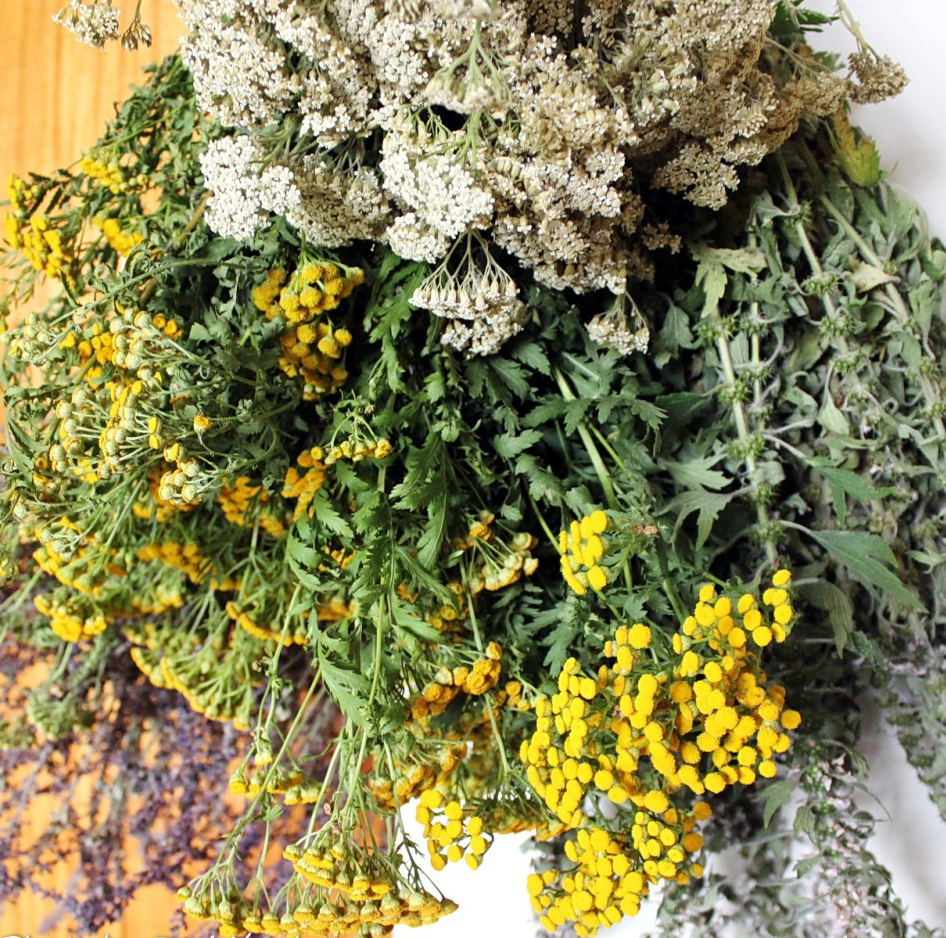
I don't have so many beautiful rye with a green tint, just a couple of kilos, so it doesn't make sense to worry that someone will eat it before me. Before grinding, I went through the grain a little, removing what the eye fell on: particles of ears, grains of dirt, sunflower seeds and clearly damaged seeds. In general, there was very little garbage, by the way, I got more weedy wheat.
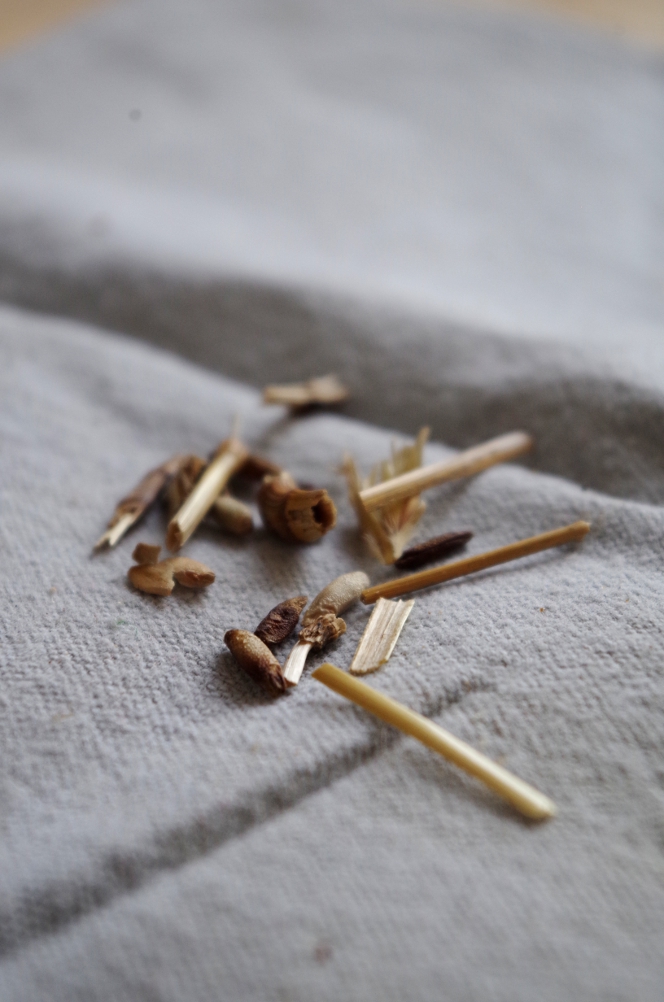
I ground rye in my mill and now I want to show how it was, and what kind of flour was obtained from organic grain. Usually I grind wheat at the smallest value, the rye stalled on this: the millstones are spinning, the mill hums, but nothing comes out. I moved the lever from "one" to "three" and saw my first rye flour!
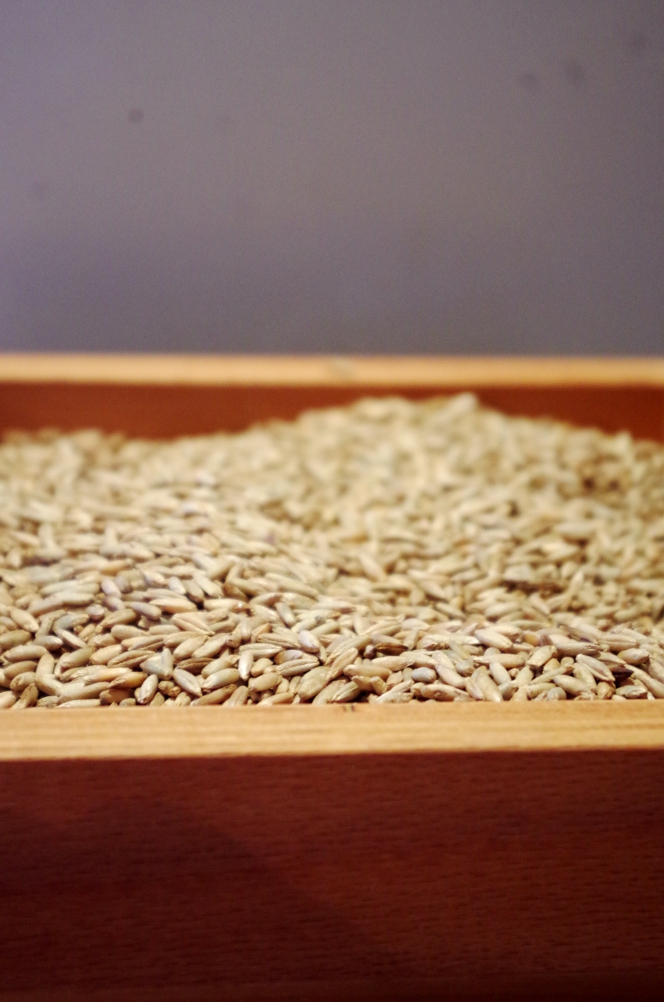
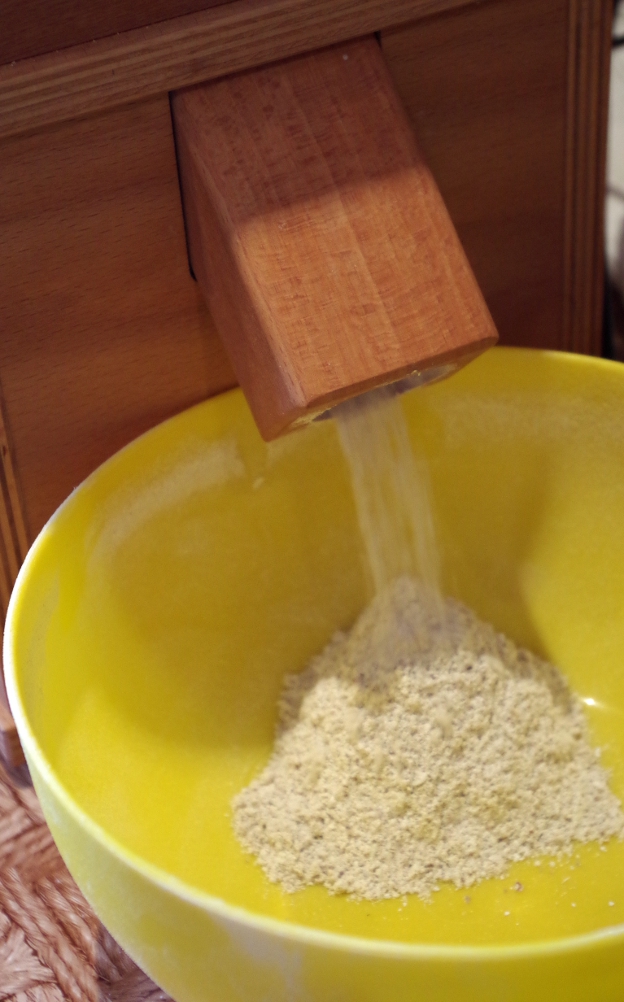
At first, it rained down, as usual, and then such things appeared. However, the grinding is no larger than that of shop flour.
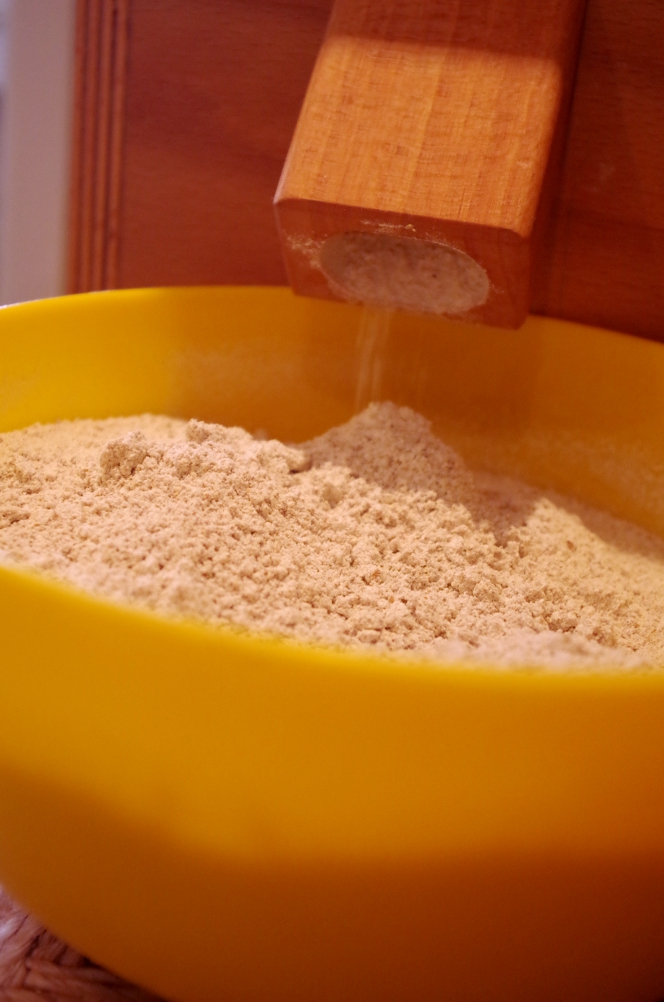
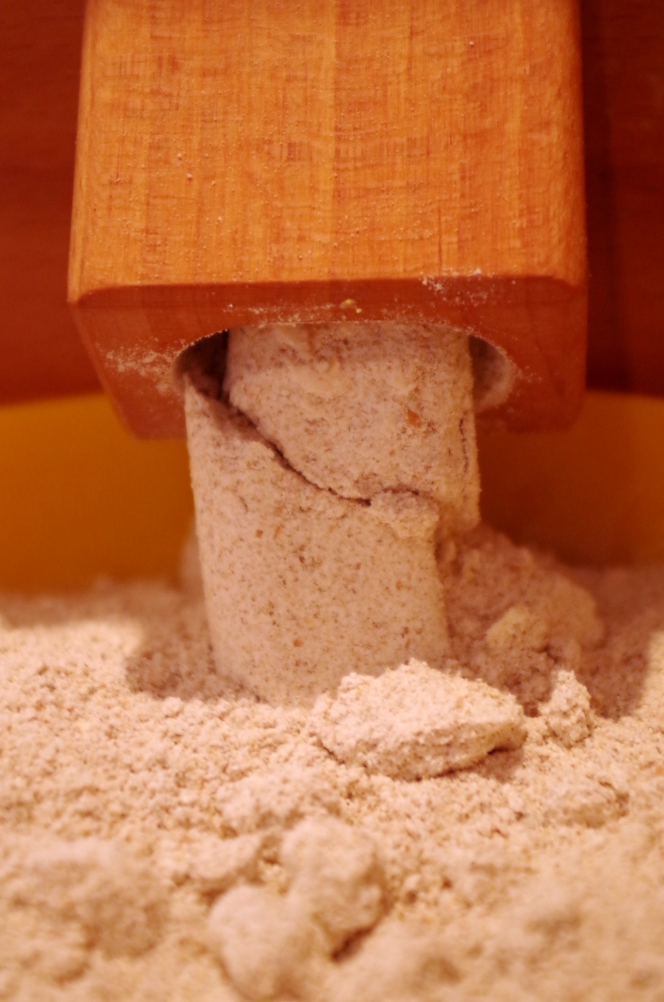
My mill grinded a kilogram of grain in about 5 minutes, and the flour poured out intermittently, that is, there was a time when nothing flew out of the mill, and then a compressed lump of flour popped out. I think this speaks, nevertheless, of grain moisture - it is clearly higher than that of wheat.
The ground flour turned out to be quite hot, I measured - the temperature is 56.3 degrees.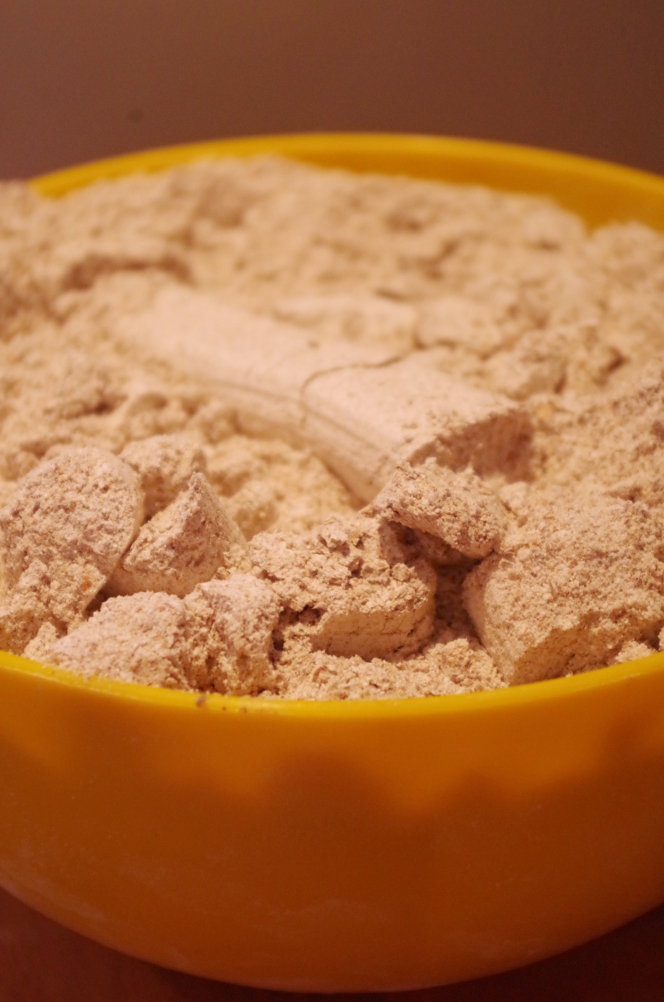
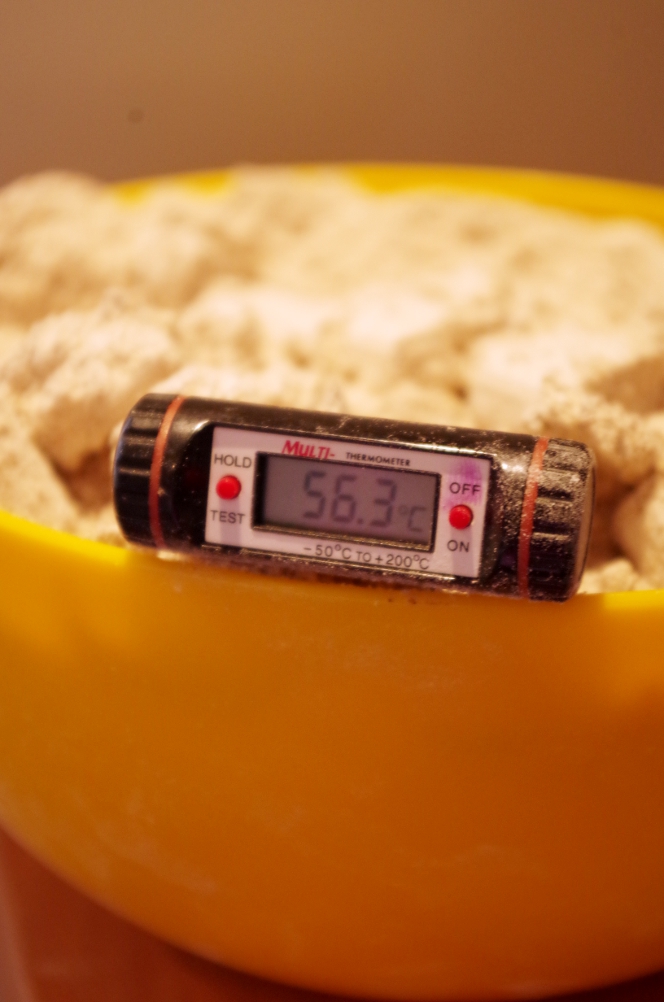
The next day, I put sourdough on this flour.




